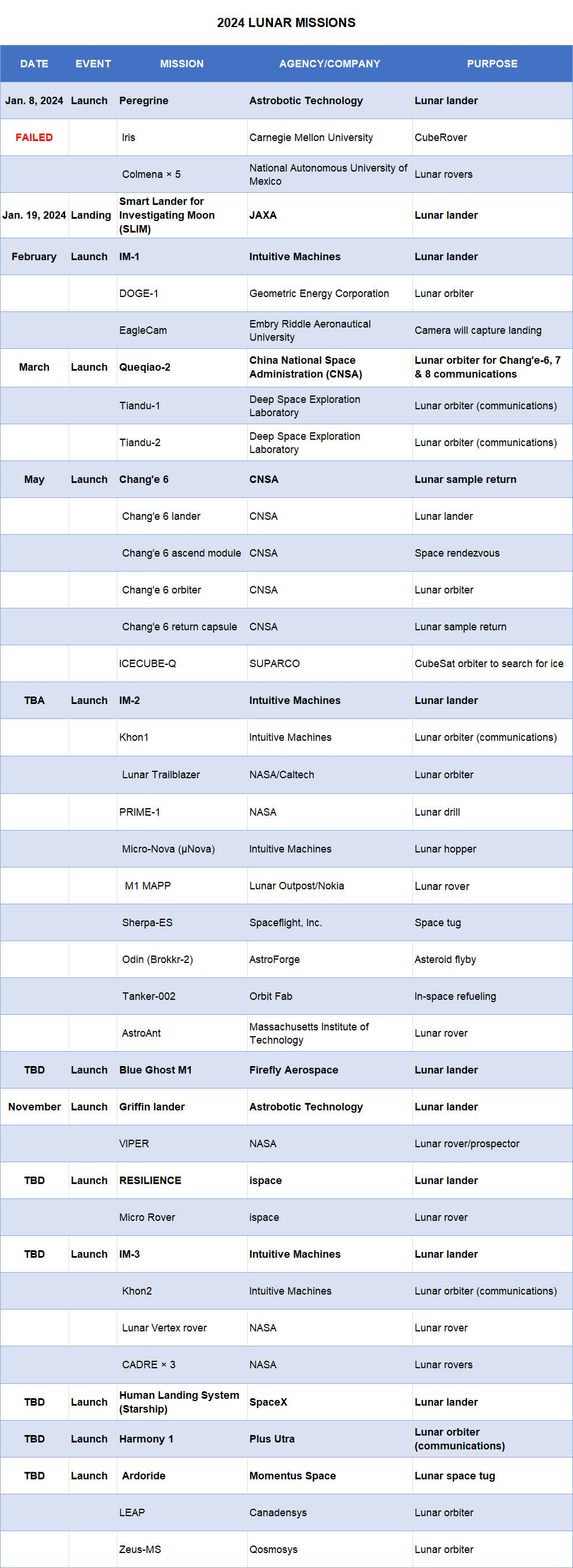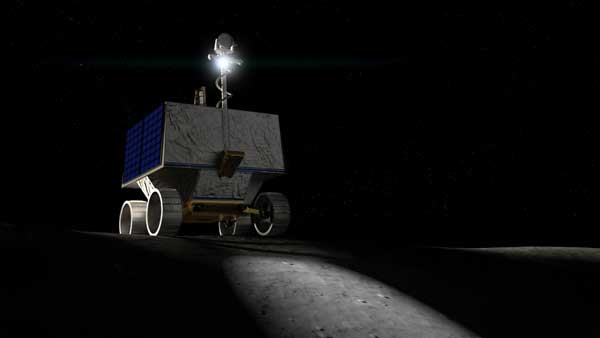Japan will attempt to land on the Moon for the first time later this week as the Japan Aerospace Exploration Agency’s Smart Lander for Investigating Moon (SLIM) attempts to touch on the surface.
SLIM will begin its descent toward the surface on Saturday, Jan. 20 at 0:00 a.m. JST (14:00 UTC/9:00 a.m. EST on Friday, Jan. 19) and land approximately 20 minutes later. JAXA will begin live coverage of the mission on its YouTube channel at 23:00 JST (15:00 UTC/10 a.m. EST).
SLIM’s main function is to test technology for precision landings on the lunar surface. The spacecraft is to touch down within 100 meters of its targeted landing spot near Shioli crater on Mare Nectaris. Precision landing is deemed to be essential to the future exploration of the surface.
If successful, Japan will become the fifth nation to land on the Moon after the United States, Soviet Union, China and India.
SLIM was launched aboard a Japanese H-IIA rocket on Sept. 6, 2023, from Tanegashima Space Center. The spacecraft entered lunar orbit on Dec. 25.
An Armada Heads for the Moon
SLIM is one of as many as a dozen missions headed for the Moon in the next year or so. China will attempt the first sample return from the lunar far side, three U.S. companies will try to land payloads for NASA, and a Japanese company is hoping the second time is the charm.
SpaceX’s schedule for attempting an uncrewed lunar landing with the Human Landing System version of Starship is uncertain. The mission will be a precursor to the first crewed landing under NASA’s Artemis program.
The third flight test of the Starship/Super Heavy rocket is likely to occur in February. The first two launches failed last year.
Intuitive Machines Heads for Moon
Houston-based Intuitive Machines has penciled in mid-February for the launch of its Nova-C lander. The spacecraft will carry five payloads for NASA under a $77 million contract awarded under the space agency’s Commercial Lunar Payload Services (CLPS) program. The lander is targeted to touch down at the Malapert A crater near the lunar south pole.
The IM-1 mission will also carry the ILO-X telescope for the International Lunar Observatory Association of Hawaii. Embry Riddle Aeronautical University’s EagleCam will be ejected during the descent of Nova-C in an attempt to record the landing.
If the mission is successful, Intuitive Machines would become the first private company to land a spacecraft on the Moon. Astrobotic Technology’s Peregrine lander failed after launch earlier this month due to a faulty valve. SpaceIL of Israel and ispace of Japan saw their landers crash into the Moon in 2019 and 2023, respectively.
Intuitive Machines has two additional CLPS lunar lander missions scheduled for later this year. The IM-2 mission is scheduled to carry the Polar Resources Ice Mining Experiment-1 (PRIME-1) drill that will search for water ice below the lunar surface at the south pole. The lander will also carry the M1 MAPP rover for Lunar Outpost and Nokia and the Massachusetts Institute of Technology’s AstroAnt rover.
The third Intuitive Machines mission is scheduled to carry four NASA rovers to Reiner Gamma on the Oceanus Procellarum. The Khon2 satellite will provide communications for the lander and its payloads.
Two other CLPS missions are scheduled for launch this year. An Astrobotic Griffin lander is set to take NASA’s Volatiles Investigating Polar Exploration Rover (VIPER) to search for evidence of water ice and other volatiles at the south pole. The mission is scheduled for November, but the launch could be delayed by the investigation into the failure of Astrobotic’s Peregrine lander earlier this month.
Firefly Aerospace’s Blue Ghost lander is due to carry a load of NASA and privately funded experiments to the lunar surface later this year. It will be the Texas company’s first attempt to land on the Moon.
A Sample from the Far Side
China will kick off its 2024 lunar effort with the launch of the Queqiao-2 satellite in March. The spacecraft will provide communications for the Chang’e-6, Chang’e-7 and Chang’e-8 surface missions.
Queqiao-2 will be accompanied by the Tiandu-2 and Tiandu-3 satellites that will test technology for a future constellation that will provide lunar communications and navigation capabilities.
Chang’e-6 will be launched in May with the goal of returning a soil sample from the far side of the Moon for the first time. The sample is expected to arrive on Earth 53 days after Chang’e-6 is launched by a Long March 5 rocket.
The ICECUBE-Q lunar orbiter, which was built by Pakistan’s Space & Upper Atmosphere Research Commission, is a secondary payload that will search for water ice on the Moon from lunar orbit.
Other Lunar Missions
ispace of Japan will attempt to land on the Moon for the second time after its first lander crashed last year. The RESILIENCE mission will carry ispace’s Micro Rover to the surface.
Rocket Factory Augsburg’s RFA One launcher is scheduled to launch Plus Ultra’s Harmony 1 lunar orbiter. Harmony 1 is the first of eight satellites designed to provide communications and navigation at the Moon. RFA One has not launched yet.
Momentus Space is also planning a rideshare mission with a pair of satellites to lunar orbit. It is not known what booster it will launch on or when it will do so.








